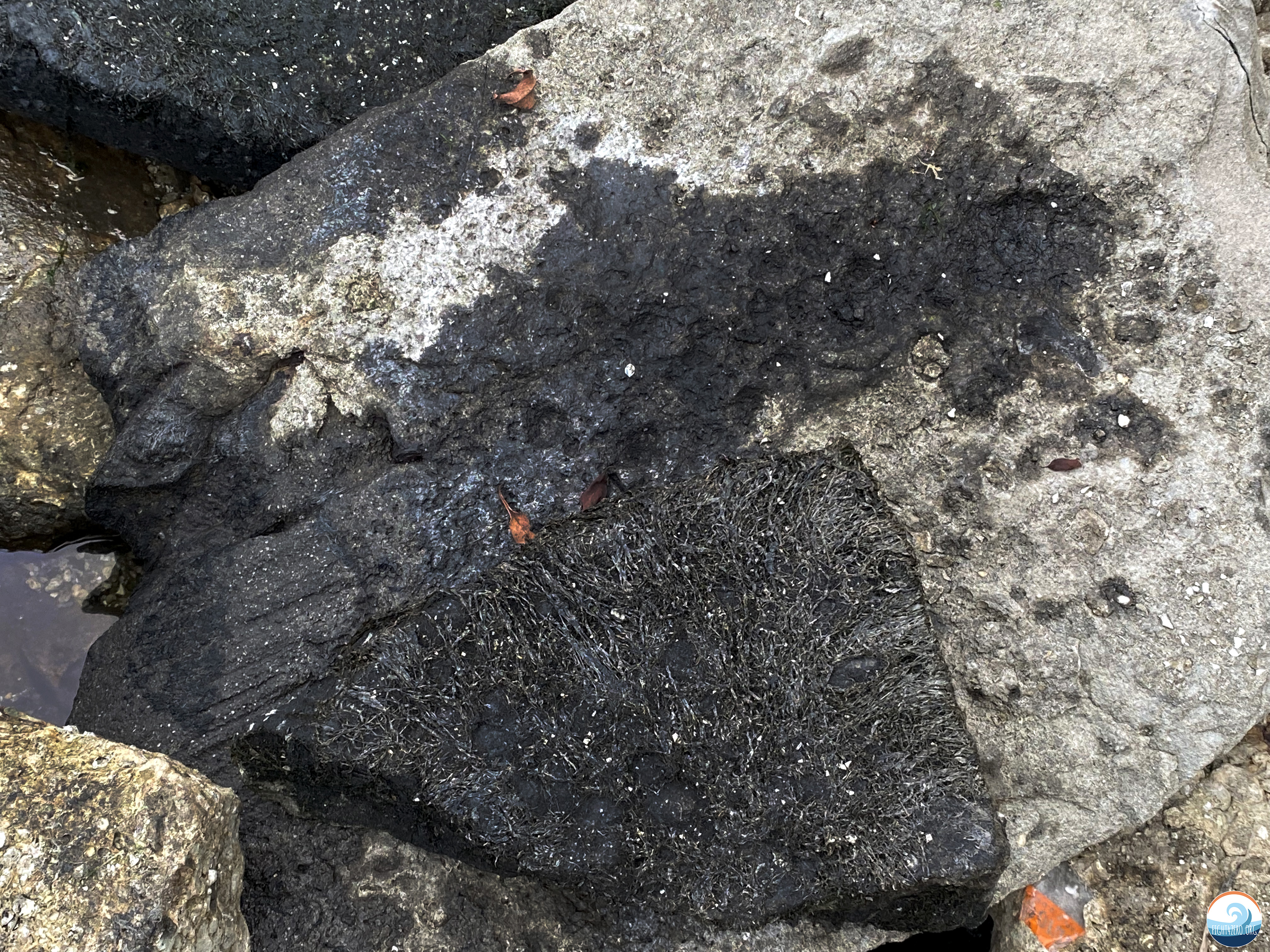TITUSVILLE, FL – A dark, tacky petroleum-like substance has saturated shoreline rocks and leaked into the Indian River Lagoon on the south side of the A. Max Brewer Bridge in Titusville, Florida.
The Florida Department of Environmental Protection (FDEP) was notified of the incident, though as of Sunday, December 11, 2022, the spill had not yet appeared on the agency’s public Pollution Notice website or within its Electronic Document Management System (OCULUS).
To contain the contamination, a blue absorbent boom was placed along the rocks, creating a floating barrier designed to slow the spread and aid recovery efforts.
Environmental Concerns
Petroleum spills pose serious risks to marine wildlife, including birds, sea turtles, fish, and mammals. They can also seep into the soil and water, releasing toxic compounds that endanger plants, ecosystems, and public health.
Even at low concentrations, petroleum hydrocarbons can poison vegetation by interfering with photosynthesis, the process by which plants convert sunlight into energy. If droplets drift into the water column, they may sink and bind with sediments, compounding long-term ecological harm.
Legal and Reporting Obligations
Under the Clean Water Act’s “sheen rule,” anyone responsible for releasing petroleum in amounts considered harmful to human health or welfare is required to report the spill to federal authorities.
Bystanders at the scene mentioned spotting a drum near the shoreline, but the source of the spill and the volume released remain unclear.
Call for Community Information
If you have witnessed anything related to this spill or have insider knowledge, your voice matters. Whistleblowers and community members play a vital role in uncovering the truth, holding polluters accountable, and protecting the health of our waterways. Investigative reporter and environmental auditor Stel Bailey is continuing to follow this case with care and discretion. Building trust with sources is central to this work, and every lead, no matter how small, can help bring clarity and accountability.
If you know something, please reach out in confidence: stelbailey@gmail.com
Additional Resources
- FDEP Pollution NoticesView current incident reports
- FDEP OCULUS DatabaseSearch environmental records and documents
- Clean Water Act (EPA Overview)Learn about the law protecting U.S. waters
- Sheen Rule (Oil Spill Reporting Requirements)Overview of the EPA’s oil discharge regulation
- Understanding Oil Spills and ResponseEPA’s guide to oil spill impacts and cleanup
 |
| The absorbent sock sits on top of shoreline rocks allowing oil to escape through the crevices |
 |
| The blue barrier is a water absorbent sock that absorbs water from leaks. |
 |
| These socks are commonly used in a spill response |
 |
| The shoreline rocks are covered in the stick and dark substance |
 |
| The shoreline rocks are covered in the sticky dark substance |
{getButton} $text={Join Fight for Brevard on Facebook} $icon={Icon Name} $color={Hex Color}





